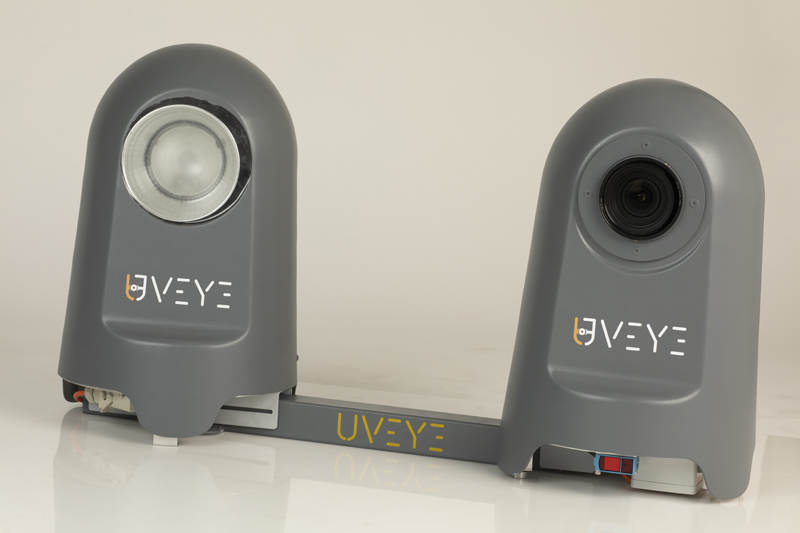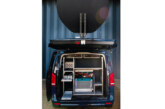
UVeye, provider of automated vehicle inspection solutions, explains how fleet managers and technicians can increase the efficiency and accuracy of predictive maintenance programmes with automated vehicle inspection scanning technology.
Keeping vehicles on the road and in a healthy state of repair is the top priority for fleet managers. After all, downtime directly correlates to lost revenue and productivity. Whilst some measure of scheduled downtime is to be expected, with annual MOT inspections and pre-planned maintenance to ensure that the vehicle is safe to be on the road, fleet managers have an obligation to take steps to minimise unexpected outages.
The most common culprits for these unplanned ‘off times’ are damaged and under-inflated tyres, flat batteries, oil leaks, minor electric faults, and brake system failures. In the day-to-day operation of a busy fleet, with vehicles undertaking regular long-haul journeys, problems are inevitably going to rear their ugly heads. However, there are a number of approaches to keep these to a minimum.
These include actions such as: making sure you buy high-quality vehicles and parts from the outset, investing in regular training of drivers so that they treat vehicles with respect and diligence, and, of course, monitoring for issues to help perform predictive maintenance. It is the predictive maintenance aspect of this list where many fleets come unstuck, but this also happens to be where AI can make a significant difference.

What is predictive maintenance?
It’s been said that an ounce of prevention is worth a pound of cure. When we think about how this applies to the world of fleets, those ounces stack up and get really heavy, really quickly. For example, if you discover that there is damage to the oil drain plug on the vehicle, then you can quickly and cheaply fix it before it causes an oil leak. If you fail to catch it, then you can expect a litany of costs to head your way.
For starters, there is the oil that will leak out, possibly causing damage to the engine. Next are the costs that will be involved in lost time, and any additional costs if the low oil level causes a problem for the vehicle whilst it is out on a delivery. This, in a nutshell, is why predictive maintenance is so important.
How to implement it for fleets
On a very basic level, getting predictive maintenance right is mostly about paying attention to your vehicles. It means implementing practices and processes that make sure vehicles are being checked regularly, ensuring that the aforementioned issues are addressed and do not develop into more serious ones further down the line.
Many companies require their drivers to perform inspections before starting their route, looking around the vehicle for any easily noticeable issues that could impact its safe operation. If an issue is detected, then that team member has a duty to report it and flag the vehicle for repair at the workshop.
Identifying issues as soon as possible allows fleet managers to plan accordingly around the downtime, avoiding the additional inconveniences and higher costs associated with an unexpected obstacle.
Challenges to regular inspections
As is often the case, though, implementing and following through on a preventative maintenance programme is easier said than done. Challenges can include:
- Limited time to carry out regular inspections
- Human error
- Lack of visibility over the status of fleet vehicles by management
- Difficulty in inspecting hard-to-view areas of the vehicle, such as the undercarriage
These challenges are relevant not only for the drivers and day-to-day managers who oversee the fleet, but for their workshop technicians as well. Whether a company has an in-house workshop or a contract with an external firm, carrying out these inspections in a manner that is both comprehensive and time efficient is a considerable challenge.

Time constraints mean that checking the air pressure of tyres, as well as general wear and tear, along with lifting the vehicle up for undercarriage inspections, are often overlooked or they are hard to accommodate on a checklist. Furthermore, taking the vehicle out of circulation to the workshop just for these check-ups is a tall order for fleet managers to request. So, how should you look to carry out inspections diligently and efficiently?
Automated vehicle inspections
Considering the challenges of the manual inspections, automated systems that capture high-resolution images of vehicles as they pass through the scanning devices during normal operations such as entering or exiting their depot or workshop are improving things for the better.
These images are analysed in a matter of seconds, producing a report that detects any and all anomalies, alerting teams if an action is required. For example, if a van or truck drives over an under-vehicle scanner, which then detects that the oil plug looks a bit loose or that there are the beginning signs of an oil leak, then the system can flag this to the fleet manager. This approach also holds an advantage for the workshop receiving the vehicle, in that they receive a full report of the vehicle’s undercarriage before it even arrives, allowing them to save time and make their repairs.
Tyre inspections pose another case for AI, as the same technology can be harnessed to scan the vehicle’s tyres every time that it leaves the facility, looking for issues that can put it at risk before even exiting the premises.
Automated inspections take the work and human error factors out of keeping up with a preventative maintenance routine, minimising downtime and costs over the lifetime of the vehicle.








